The strange and beautiful moon jellyfish carry numerous interesting aspects. Veteran aquarists like you love to have them. They need specific care requirements for a prolonged relationship. Here is the proper moon jellyfish care guide with many other aspects. Like what human feels about their stinging, some potential companions, and some reasons why they sink or stop swimming.
Content Table
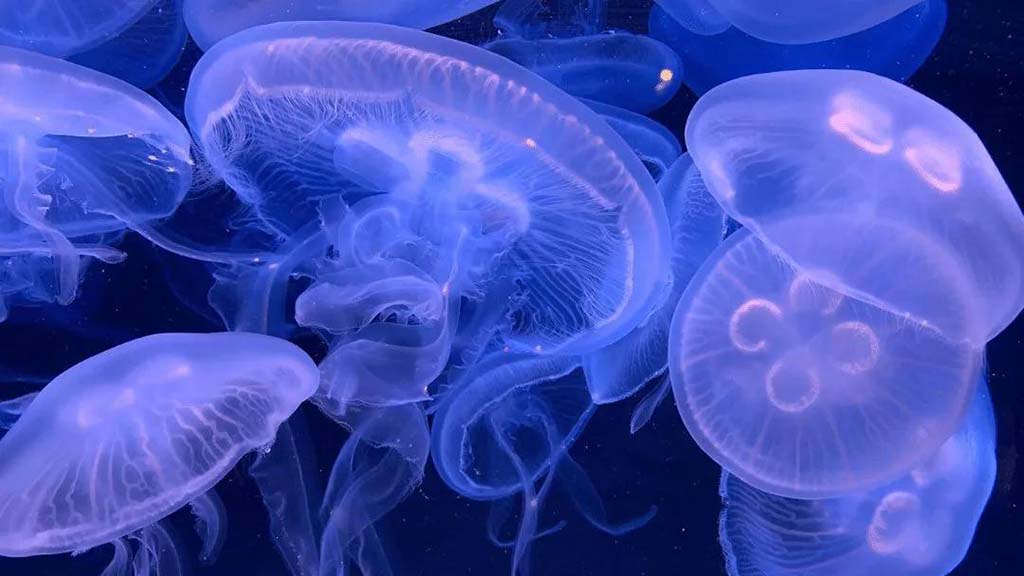
moon jellyfish
Do Moon Jellyfish Sting?
Yes, Moon jellyfish can sting with their tentacles. However, their sting is not powerful enough to create serious health consequences. Their sting even can’t pass through human skin. They have mild stinging cells that only cause rashes for a few hours and minute discomfort.
Moon Jellyfish Care Guide
As mentioned, moon jellyfish are not harmful to humans. Therefore, you can keep these beautiful creatures in your home jellyfish tank. However, they require extra care. After reading the following care guide, you can easily manage your jellyfish tank.
Tank Size and Shape
A moon jellyfish requires 6-gallon space. They are schooling animals, so keep them in at least a group of 3 or more. A 20-gallon tank is the minimum optimal size for 3 moon jellyfish. Add 10 gallons per moon jellyfish. The other tank aspect is that it should be round corner. Sharp corners confuse them.
Acclimation
Acclimation is prominent as it’ll help them to avoid stress in the new house. Here is a brief step-by-step procedure.
- Add half a cup of water from the tank to the jellyfish bag. After 5 minutes, remove half a cup from the bag and add to the tank. Repeat the cycle for 20 minutes.
- Hang the jellyfish bag in the aquarium for one hour to achieve temperature acclimation.
- Add the jellyfish into the water with care. Make sure to complete submergence.
- Avoid bubble formation around the jellyfish during the entire procedure.
Water Parameters
Moon jellyfish are a bit hardy. They can survive even on 2.0 ppm ammonia, but exposing them for an extended period, i.e., an hour or two, will shorten their life and tentacles. Buy a testing tool kit to observe water parameters closely. Here are the ideal water parameters for your moon jellyfish.
| Parameter | Value |
| Temperature | 18 to 25°C |
| pH | 8.0 to 8.3 |
| Salinity | 32 to 35 ppt |
| Nitrite | 0.0 ppm |
| Nitrate | 20.0 ppm |
| Ammonia | 0.0 ppm |
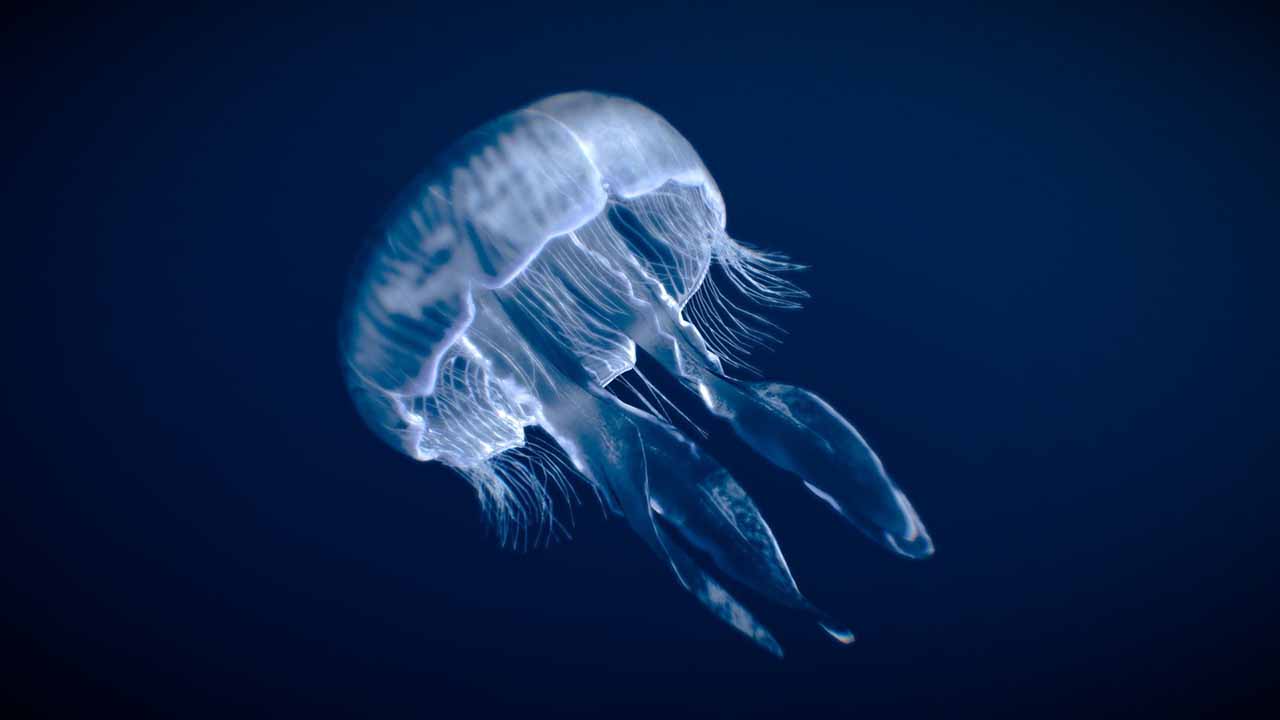
Care of moon jellyfish
Water Change
About 95% of the total jellyfish mass consists of water. Therefore, unlike other marine species, they are most vulnerable to water changes. Aside from maintaining the water parameters, be very careful about water change. Here are some water change tips.
- Regularly change 10 to 25% tank water after each week. If you feel any change in water parameters, do it quickly without waiting for the weekend to avoid any damage.
- Always use Reverse Osmosis (RO) water to avoid unintentional chlorine addition in your tank.
- Place the prepared water for some time, i.e., 24 hours, to establish their parameters and aeration. Otherwise, moon jellyfish are vulnerable to sudden changes in pH and other parameters.
- If you feel extra beneficial bacteria removal from the tank, add beneficial bacteria in your tank on water change.
Lighting
They require dim light with a proper day-night light cycle, i.e., 12 hours each. Moreover, light helps to glow their translucent bodies. In lighting, their bells look like a full moon.
Feeding
Moon jellyfish are passive eaters. They don’t follow the prey. In their natural habitat, they can live days without eating something. They use their tentacles to prey. Moon jellyfish are carnivores and you can feed them once daily.
If you’ve skipped some days, then the next day, give them a diet two times a day. Spread the feed away from their range. It’ll help them to have some exercise. They will take about 5 to 30 minutes to bring it to their stomach. If they cannot do so, then check the water’s pH.
Their diet includes live and frozen items. Here are some diet options.
| Zooplankton | Mollusk larvae | Tunicate larvae |
| Small fish | Crustaceans |
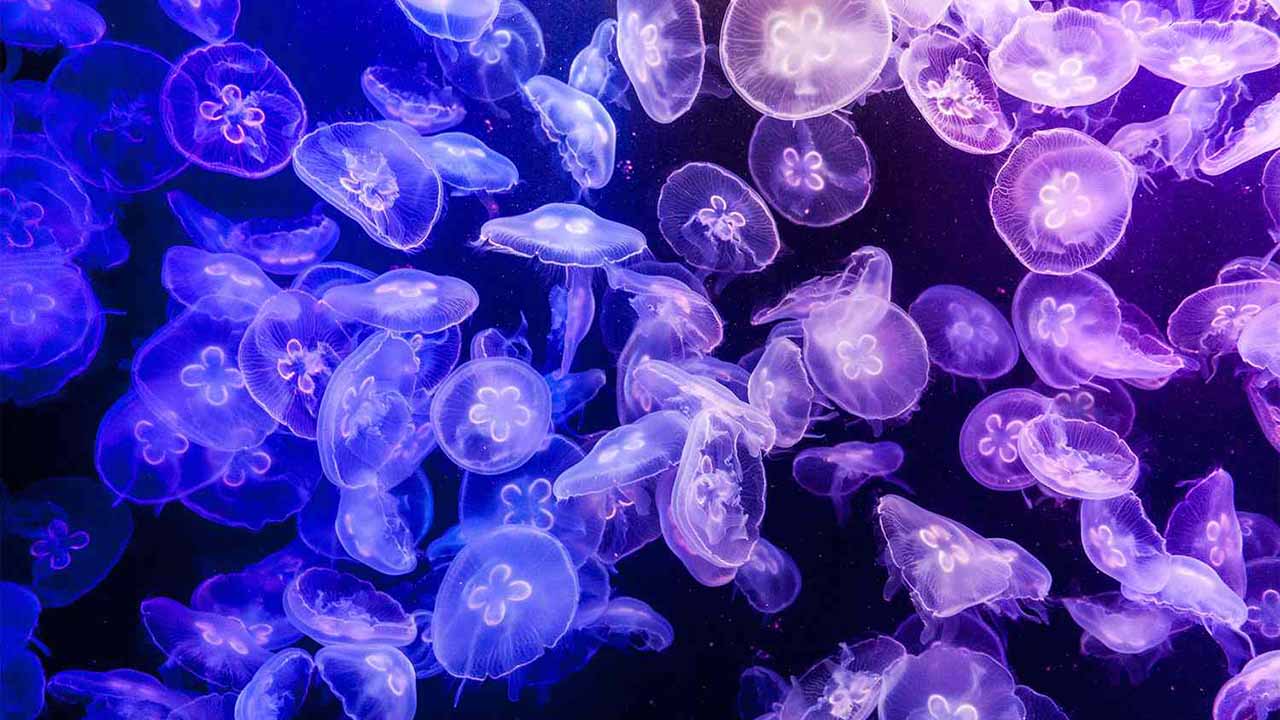
moon jelly fish care guide
What happens if the Moon Jellyfish Sinks or Stops Swimming?
Moon jellyfish have a natural buoyancy to always float in the water. Keeping them in a tank carries numerous challenges. One of the challenges is that sometimes they sink or stop swimming. Here are some reasons and their remedies.
Water Current
- Reason: Water current is not enough to keep them buoyance in the tank.
- Solution: Set such gentle water flow that keeps them afloat.
Water Parameters
- Reason: Sudden water changes or poor water quality, i.e., high ammonia or nitrite and low pH, leads them to stop swimming and tend to sink in the tank.
- Solution: Weekly change of 10% of the tank’s water. Off and on, check water parameters. If there is an unusual change in the water parameter, then change the water.
Water Temperature
- Reason: They are sensitive to water temperature. Any rise and fall out of their specific range cause lethargy and lead to sinking.
- Solution: Use a marine heater to control the temperature within desired limits, i.e., 20 to 28 degrees Celsius.
Health Issues
- Reason: Your moon jellyfish stop swimming and begin to sink due to health issues. It may be a parasitic disease or infection problem.
- Solution: Quarantine your jellyfish and consult with an expert.
Filter Suction
- Reason: Moon jellyfish can sink due to high filter suction.
- Solution: reduce the filter suction within the limit. If it’s inevitable, then increase the water current that upholds them.
Why Do Moon Jelly Fish Age Backwards?
When moon jellyfish get stressed due to physical damage, temperature change, or inadequate food, they pass them through transdifferentiation. In this procedure, they turn into cyst-like balls, settle on the bottom, and regrow after a few days. It gives them a new body plan and, on maturation, produces the same genetic medusae.
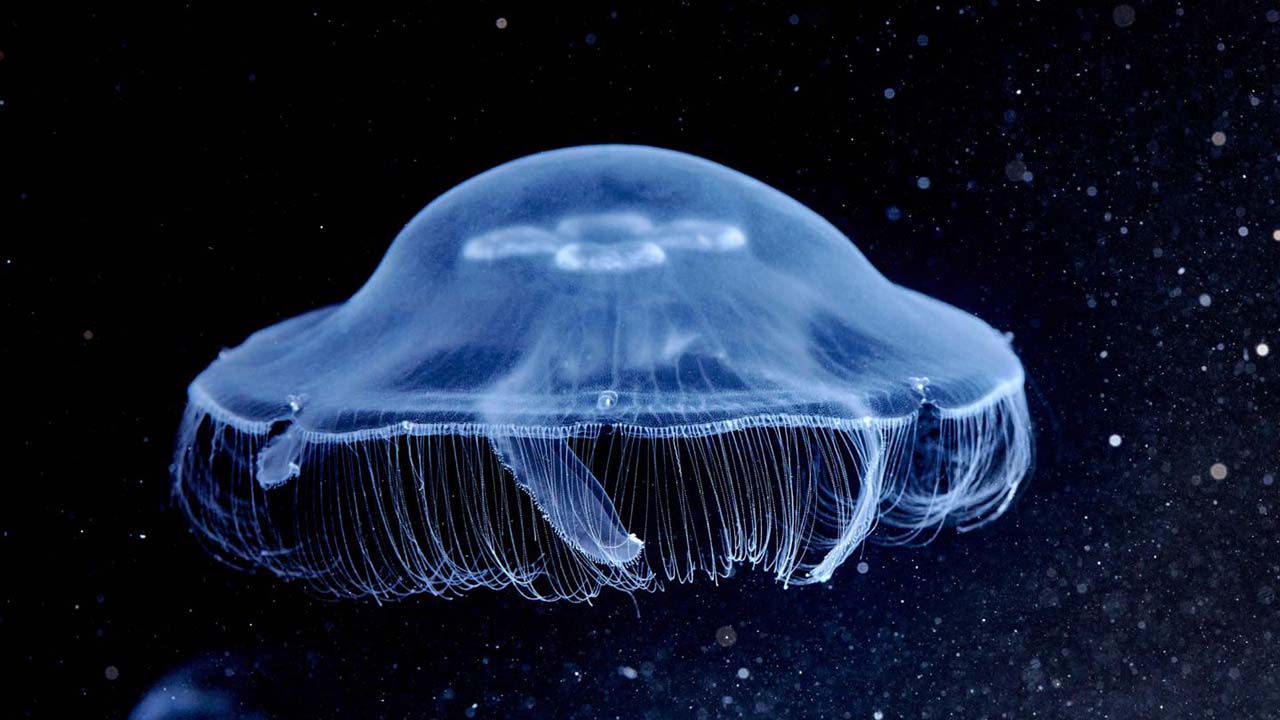
Moon jellyfish in a tank
What Is the Hardest Part of Maintaining Moon Jelly Fish Tank?
Maintaining the proper water parameters is the hardest part of maintaining a jellyfish tank. Here are some tricks to make your maintenance journey easy.
- Often, check the water parameters. If a water change is required, then go for it. Don’t wait for the weekly water change.
- Feed them to live foods. Raise the live food by yourself in a separate tank.
- Always keep your moon jellyfish in a round corner tank.
- Feed once a day.
- According to your food supply, tank mates, and tank placement, set tank cleaning frequency, i.e., daily, twice a week, or weekly.
- Adjust proper water flow and filter suction in the tank.
Can Different Species of Jellyfish Coexist With Moon Jellyfish?
No other jellyfish species should keep with moon jellyfish. Jellyfish species can feast on other jellyfish species. They are sensitive to water parameters and other changes. Therefore, you should also avoid housing any other species with them. However, upside-down jellyfish are an exception.
Ideally, keep the moon jellyfish in a species-only tank. However, you can introduce living things in your jellyfish tank after setting optimal water parameters and cycling.
| Nassarius Snails | Glass shrimp | Blue Leg Hermit Crabs |
| Cerith Snails | Peppermint Shrimp |
Conclusion
Moon jellyfish tanks can create focal points in the house or office, or they may prove an efficient study tool. Unlike many jellyfish, their sting is almost harmless to humans. Maintaining ideal case water parameters, in-time water changes, and proper diet helps to live them long, i.e., 2 to 3 years. If your creature is not swimming or begins to sink, check the flow rate, water parameters, temperature, etc. Set the said parameters and follow proper care to enjoy their company.

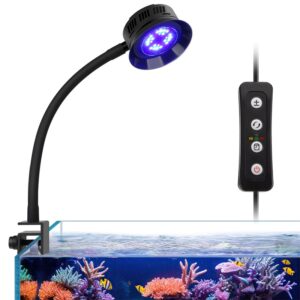
Leave a comment